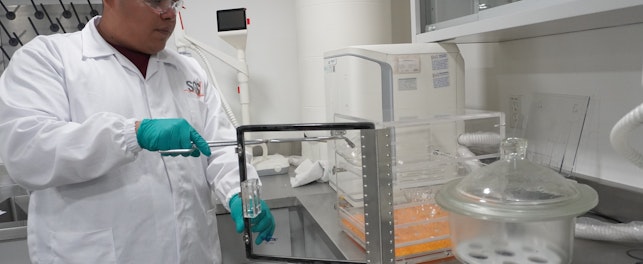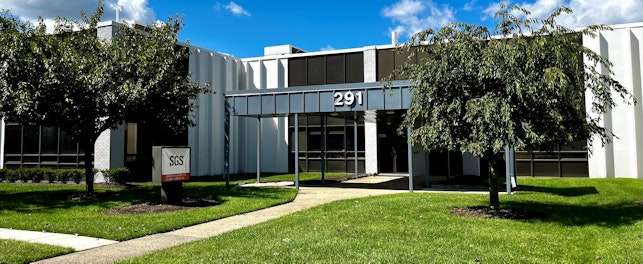A recent hotel stay left me a little confused – where was the television? In fact, the mirror was also the TV. Hidden technology – electronic devices that aren’t readily visible – are becoming more common. What factors should manufacturers consider when developing products for the North American market?
Hidden tech is a growing market. Many consumers consider large electronic devices to be unsightly – they wish for technology that is hidden until required. One such example is the global wireless charging market, which is expected to grow at a compound annual growth rate of 60.22% between 2017 and 2025 – estimated at USD 3,346.91 million in 2017, it is expected to reach USD 145,337.92 million by 2025.i
Many of us will already use hidden tech – watches that measure your exercise, mirrors that aid your work out, automobile keys that unlock only by proximity, cable boxes that communicate by wireless local area network (WLAN), and a wide variety of products utilizing radio-frequency identification (RFID). This includes cellphone payment systems, smart utility meters, and store anti-theft devices.
Modern automobiles also contain a variety of driving aids that use vehicle to everything (V2X) devices, such as forward collision warning, blind spot warning, intersection movement assist, and roadworks warning. These systems utilize technology that is either WLAN-based or cellular-based.ii As a species, our hard-wired reticence over new technology has quickly been overcome by their utility.
It should not be forgotten this technology can still fail. There are stories of exercise watches failing to sync correctlyiii and, more worryingly, children being trapped in automobiles when the keys fail.iv Thieves can also exploit weaknesses in RFID technology to take money from credit cards.v
What are the Main Standards?
Answering this question is complex. It depends on what market you are targeting and what the product is. For example, a table with wireless charging capabilities needs to conform to both furniture and electrical and electronic (E&E) standards. Regulations will also differ between markets, although there may be overlap.
A good starting point for manufacturers is IEC 62368-1:2018 Audio/video, information and communication technology equipment – Part 1: Safety requirements. Recognized in many markets, this is the main safety standard for devices.vi
Most, if not all, of these products use wireless systems. In the US, the radio-frequency spectrum is regulated by the Federal Communications Commission (FCC). The primary regulatory requirement covering most of these products would be Title 47 of the Code of Federal Regulations, Part 15.vii This rule covers ‘unlicensed’ devices, thereby allowing the end user to operate the product without a license from the FCC.
An exception is V2X technology. ‘Licensed’ devices, for example cell phones, require an FCC license, which is normally held by the carrier. While these products are still regulated by Title 47, certification is performed under different parts. Typically, cell phones come under Parts 22, 24, and 27. V2X devices operate under Part 90 for on-board units and Part 95 for road-side units.
It should be noted that some parts of a cell phones, for example Bluetooth or WLAN are ‘unlicensed’.
A similar approach is taken in Canada. ‘License exempt’ is broadly equivalent to the FCC’s ‘unlicensed’. The radio standards specifications (RSS) that apply to this kind of device range from RSS-210 to RSS-288. The primary standard covering products such as Bluetooth and WLAN is RSS-247. Unlike in the US, however, V2X is ‘license exempt’ in Canada and is covered by RSS-252.
Other licensed products are covered by RSS-111 to RSS-199. Specifically, cellular devices (2G, 3G, 4G, 5G) are typically covered by RSS-130, RSS-132, RSS-137 and RSS-139.
It should be noted that Bluetooth and WLAN are only two among many IoT technologies that manufacturers must consider when looking at accessing markets around the globe. Others include ANT+, LoRa, and Z-Wave.viii
Smooth Routes to Compliance
Accessing markets with hidden tech products can be complex. It is advisable to seek guidance from a certification provider that has considerable experience in working with different product types and markets.
With a worldwide network of E&E laboratories and experience in accessing all major global markets, SGS is the first choice for businesses operating in the hidden tech market. We have considerable experience in performing EMC and RF testing, alongside comprehensive quality, safety and performance testing solutions for E&E and other consumer products.
To discover our other related services, you may visit www.sgs.com/ee.
For more information, please contact:
Jason Wei
Senior Technical Manager
Electrical and Electronics
t: +86 20 8215 5555
David Schramm
Operations Manager
Electrical and Electronics
t: +1 770-570-1819
REFERENCES:
i Wireless Charging Market 2020
ii Vehicle-to-everything
iii Fitbit horror stories
iv Mum issues chilling warning after toddler trapped in car when smart key fob failed
v Thieves scan credit card in woman's purse
vi IEC 62368-1:2018
vii Part 15 - Radio Frequency Devices
viii Postscapes



